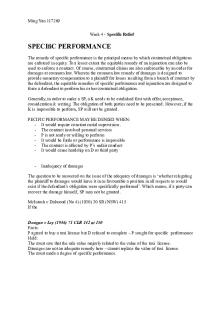Weekly Journal #6 - discuss previous week lectures and thoughts PDF

| Title | Weekly Journal #6 - discuss previous week lectures and thoughts |
|---|---|
| Course | Introduction to Deaf Studies |
| Institution | California State University Northridge |
| Pages | 1 |
| File Size | 36.1 KB |
| File Type | |
| Total Downloads | 18 |
| Total Views | 156 |
Summary
discuss previous week lectures and thoughts...
Description
1. Why was it necessary to develop a descriptive continuum of the various signing systems? What are the kinds of signing systems used in the United States? ● It’s necessary to develop a descriptive continuum because it helps to better understand the variations. It was created regarding the confusion of the influence and role of English in ASL. The continuum helps examine the potential influence of English on ASL. Signing systems used in the US are Pidgin ASL, contact signing, English ASL, Modern ASL, Rarefied ASL, and Signed English.
2. Name some of the linguistic features of American Sign Language. Why do you think it was important for the author, Tom Holcomb, to emphasize the numerous linguistic features of ASL? ●
●
ASL has phonology, morphology, syntax, and discourse. For Phonology, signs can be divided into their smallest units into four categories of parameters: handshapes, locations, movements and palm orientation. Morphemes exist in ASL by numbers being incorporated with noun signs such as 10 YEARS OLD or 4 WEEKS. Another example is noun verb pairs. One movement is the action but repeated movement is the noun (ex: FLY/AIRPLANE). ASL has the syntax of OSV (Object-subject-verb) or “topic-comment”. ASL level of discourse is the flow of the conversation such as the beginning and the end of the conversation or climax of the story. The process used is diamond structure. I think it was important for Holcomb to mention the linguistics of ASL. I’ve noticed may people think ASL is just like English so it’s “easy to learn”, when in reality ASL has its own grammatical system....
Similar Free PDFs

Weekly Reflection- Week 6
- 2 Pages

CDM001 - Week 6 Journal
- 1 Pages

Edmu 524 week 6 journal
- 2 Pages

Week 4 - Weekly note
- 5 Pages

Week 5 - weekly
- 2 Pages

Journal #6
- 2 Pages

Journal 6
- 2 Pages

Week 6 Week 6 Week 6Week 6
- 2 Pages

Week 4 Learning Journal
- 2 Pages

Learning journal week 2
- 4 Pages

Learning Journal week 3
- 3 Pages

Week 2 Learning Journal
- 5 Pages

IE Week 2 - Weekly Assignment
- 1 Pages
Popular Institutions
- Tinajero National High School - Annex
- Politeknik Caltex Riau
- Yokohama City University
- SGT University
- University of Al-Qadisiyah
- Divine Word College of Vigan
- Techniek College Rotterdam
- Universidade de Santiago
- Universiti Teknologi MARA Cawangan Johor Kampus Pasir Gudang
- Poltekkes Kemenkes Yogyakarta
- Baguio City National High School
- Colegio san marcos
- preparatoria uno
- Centro de Bachillerato Tecnológico Industrial y de Servicios No. 107
- Dalian Maritime University
- Quang Trung Secondary School
- Colegio Tecnológico en Informática
- Corporación Regional de Educación Superior
- Grupo CEDVA
- Dar Al Uloom University
- Centro de Estudios Preuniversitarios de la Universidad Nacional de Ingeniería
- 上智大学
- Aakash International School, Nuna Majara
- San Felipe Neri Catholic School
- Kang Chiao International School - New Taipei City
- Misamis Occidental National High School
- Institución Educativa Escuela Normal Juan Ladrilleros
- Kolehiyo ng Pantukan
- Batanes State College
- Instituto Continental
- Sekolah Menengah Kejuruan Kesehatan Kaltara (Tarakan)
- Colegio de La Inmaculada Concepcion - Cebu


